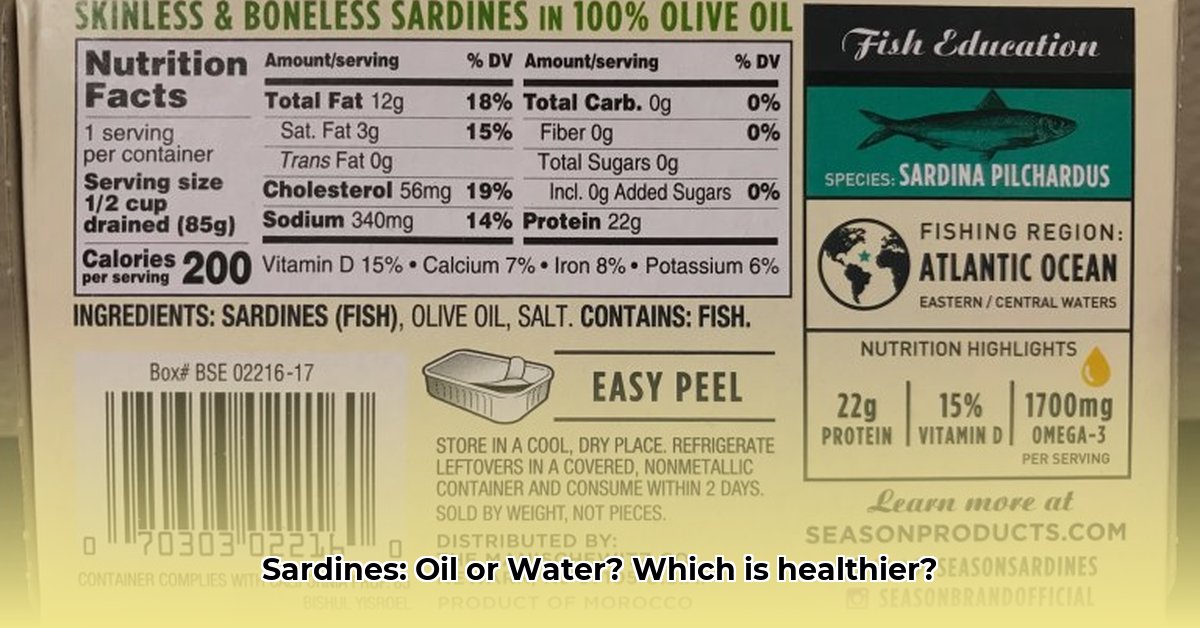Unlock the Nutritional Powerhouse: Discover the Health Benefits of Chicken of the Sea Sardines. These small, often-overlooked fish are packed with essential nutrients, making them a healthy and affordable addition to any diet. This guide provides a comprehensive overview of Chicken of the Sea sardines’ nutritional value, comparing oil-packed and water-packed varieties, and offering practical tips for incorporating them into your meals.
Decoding the Nutritional Value
Chicken of the Sea Sardines in Olive Oil
Here’s a nutritional snapshot of one serving (one can, drained – approximately 69g) of Chicken of the Sea sardines in olive oil:
| Nutrient | Amount | % Daily Value (DV) |
|---|---|---|
| Calories | 150 | |
| Total Fat | 12g | 18% |
| Saturated Fat | 3g | 15% |
| Cholesterol | 75mg | 25% |
| Sodium | 270mg | 12% |
| Protein | 11g | |
| Vitamin D | 8.8mcg | 45% |
| Calcium | 190mg | 15% |
| Iron | 0.7mg | 4% |
| Potassium | 90mg | 2% |
Key nutrients in this variety include:
- Omega-3 Fatty Acids: While not listed on the standard nutrition label, sardines are renowned for their omega-3 content. The olive oil likely enhances the bioavailability of these healthy fats. Omega-3s support heart health, brain function, and may reduce inflammation. Current research suggests varying effectiveness among different types of omega-3s.
- Vitamin D: One can provides almost half of the recommended daily intake, crucial for bone health and immune function.
- Calcium: Contributes to bone health, working synergistically with vitamin D.
- Protein: Offers 11 grams per serving, crucial for building and repairing tissues.
Ingredients: Sardines, olive oil, water, salt, and smoke flavoring. The olive oil contributes monounsaturated fats, further supporting cardiovascular health.
Chicken of the Sea Sardines in Water
Here’s the nutritional breakdown for one serving (one can, drained) of Chicken of the Sea sardines in water:
| Nutrient | Amount | % Daily Value (DV) |
|---|---|---|
| Calories | 120 | |
| Total Fat | 8g | 12% |
| Saturated Fat | 2.5g | 13% |
| Cholesterol | 80mg | 27% |
| Sodium | 270mg | 12% |
| Protein | 11g | |
| Vitamin D | 8mcg | 40% |
| Calcium | 172mg | 14% |
| Iron | 0.7mg | 4% |
| Potassium | 128mg | 3% |
Ingredients: Sardines, water, and salt. This simpler preparation provides a leaner protein source. While slightly lower in vitamin D and calcium compared to the oil-packed version, it remains a significant source of these nutrients.
Oil vs. Water: Which is Right for You?
| Feature | Water-Packed | Oil-Packed |
|---|---|---|
| Calories | Lower | Higher |
| Fat | Lower | Higher (includes healthy fats) |
| Sodium | Similar | Similar |
| Vitamin/Mineral Absorption | May be slightly lower | Potentially enhanced by oil |
| Flavor | Milder | Richer |
The “best” choice depends on individual dietary needs and preferences. Oil-packed offers potentially enhanced absorption of fat-soluble vitamins and richer flavor, but with higher calories and fat. Water-packed provides a leaner option with a milder taste.
Sardines: Tiny Fish, Big Health Benefits
Sardines offer several health advantages:
- Heart Health: Omega-3s may lower blood pressure, reduce triglycerides, and decrease the risk of heart disease.
- Bone Strength: The combination of vitamin D and calcium is essential for bone health. The edible bones provide an additional source of calcium.
- Brain Function: Some studies suggest omega-3s may support cognitive function and mental health.
- Anti-inflammatory Effects: Omega-3s are known for their anti-inflammatory properties, which may benefit conditions like arthritis.
- Low in Mercury: Being low on the food chain, sardines accumulate less mercury than larger fish.
Addressing Concerns:
- Sodium: While moderate in sodium, individuals on sodium-restricted diets should monitor intake and consider rinsing the sardines.
- Sustainability: Sardines are generally considered a sustainable seafood choice. Check Chicken of the Sea’s website for information on their specific practices.
Sardines vs. Other Protein Sources
Sardines often surpass common protein sources like chicken, beef, and some types of tuna in omega-3 content and are often lower in saturated fat. They are also an excellent source of vitamin B12, selenium, and iron. The affordability of sardines enhances their appeal as a nutritionally valuable protein choice.
Incorporating Sardines into Your Diet
Don’t let the strong flavor intimidate you. Rinsing sardines can mellow the taste. Consider incorporating them into recipes:
- Salads: Add them to a Caesar salad or a Mediterranean-inspired salad with olives and feta cheese.
- Pasta Dishes: Toss with pasta, lemon, garlic, and Parmesan cheese.
- Sandwiches: Create open-faced sandwiches with whole-grain bread, cream cheese, cucumber, and red onion.
- Curry: Add them to a seafood curry for a unique flavor experience.
Frequently Asked Questions (FAQs)
- Are sardines safe to eat during pregnancy? Yes, due to their low mercury content, sardines are generally considered safe during pregnancy. Consult with your doctor for personalized advice.
- How should I store sardines? Store unopened cans in a cool, dry place. Once opened, refrigerate and consume within a few days.
- Can I eat the bones? Yes, sardine bones are soft and edible, providing an extra boost of calcium.
Conclusion
Chicken of the Sea sardines are a nutritional powerhouse, offering a wealth of health benefits at an affordable price. Whether you opt for oil-packed or water-packed, incorporating these tiny fish into your diet can be a delicious and effective way to boost your nutrient intake. Try the suggested recipes or explore other culinary creations to discover your favorite way to enjoy this versatile and healthy food.
- Bento Box Trays Streamline Restaurant Meal Presentation and Transport - December 13, 2025
- Plastic Bento Boxes Face Scrutiny Over Sustainability Impacts - December 11, 2025
- Bento Tray Revolutionizes Organized Meal Transport and Presentation - December 10, 2025










